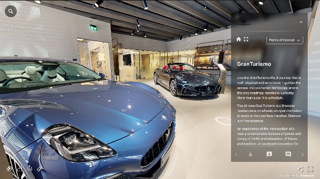The past fifty years has seen radical change within industries such as the automotive sector thanks to the advent of technology.
Gone are the days where drivers simply needed to worry about going from A to B. Now, in a world of autonomous self-driving vehicles, the technology that falls within the car matters almost as much as the engine itself.
The one thing that other industries could learn from automotive manufacturers is their approach to technology.
Each and every advancement has been done in the name of customer experience rather than implementing technology for the sake of it.
What is interesting to see now is that many are beginning to understand that it is not just the headline innovations such as self-driving that can create the biggest impact.
It can be powerful platforms and advancements behind the scenes that help support the demand customers now have in getting a highly personalised vehicle and a service to match.
Take this scenario - a customer is going through the options for a new car and they can’t wait to get their hands behind the wheel, however they can’t decide between silver or black paint.
Eventually they decide on black only to find out that this colour is out of stock and increases the lead time by a full two weeks.
They only find this out once the order has been placed.
Using real-time data could have enabled the company to be completely transparent at the outset and the customer to understand the configurations and lead times accordingly.
Focusing on your data
The first thing to focus is on understanding that truly excellent customer experience comes from knowledge.
That relies on all your data sources including show rooms and your website working harmoniously together.
Unfortunately, the reality is that for many manufacturers and brands, this isn’t the case. The reality for many is that data sits in different systems and doesn’t talk to each other.
What the automotive industry needs is a new way to handle data, one that supports collecting a continuous flow of data from across the business, between apps and databases.
Similar to the human body’s nervous system, they ultimately need a data platform and instant link between all of a company’s footprint that sets data in motion.
The impact of data in motion
Let's go back to the above scenario. If the manufacturer had set their data in motion, they would have been able to tell the customer upfront which personalisations they would have had to wait for, which ones they could have chosen to get their car the quickest, and when they should expect to receive the car.
The customer could also have continued to benefit from data in motion even after receiving the ca, i.e. from live weather and traffic updates, to how economically they were driving the car.
The benefits don’t stop with the customer though.
The manufacturer does not want its plant sitting on spare parts just in case they are needed.
Instead it could run an agile business where all parts just arrive as and when they are needed, reducing the costs associated with storing parts needlessly.
That all works as SaaS layers, apps and databases within the business are continuously talking to each other via Confluent.
Looking at the wider picture, with all this data that the manufacturer now has to hand, they can feed back to the business with more detailed insights than ever before, including, how vehicles are being driven, most utilised features and predictive maintenance.
This all contributes to future developments and creates a full-circle feedback loop.
The future
While the automotive industry may have been a hotbed for innovation over the past fifty years, there are no signs to show that this will be easing any time soon.
In fact, in the short term the industry seems set for further innovation as we ease into the adoption of electric and autonomous self-driving cars.
Data in motion is well placed to be an important part of the next generation of vehicles because it is fundamental to the overall customer experience.
Data will drive the industry forward, providing real-time insights at employee’s fingertips, and with that a great customer experience that ultimately enables the sort of success automotive brands are striving for in today’s market.
Author: Peter Reeve, vice-president Northern EMEA, at Confluent


















Login to comment
Comments
No comments have been made yet.